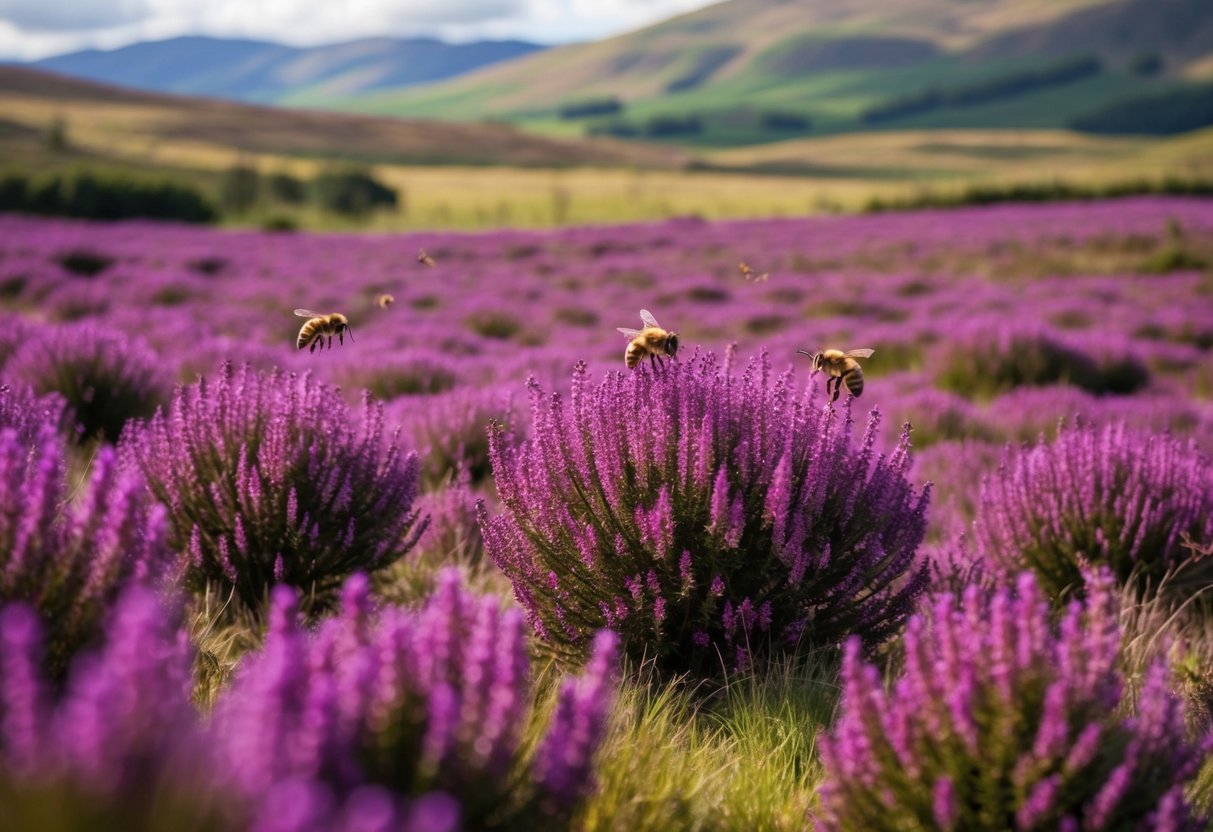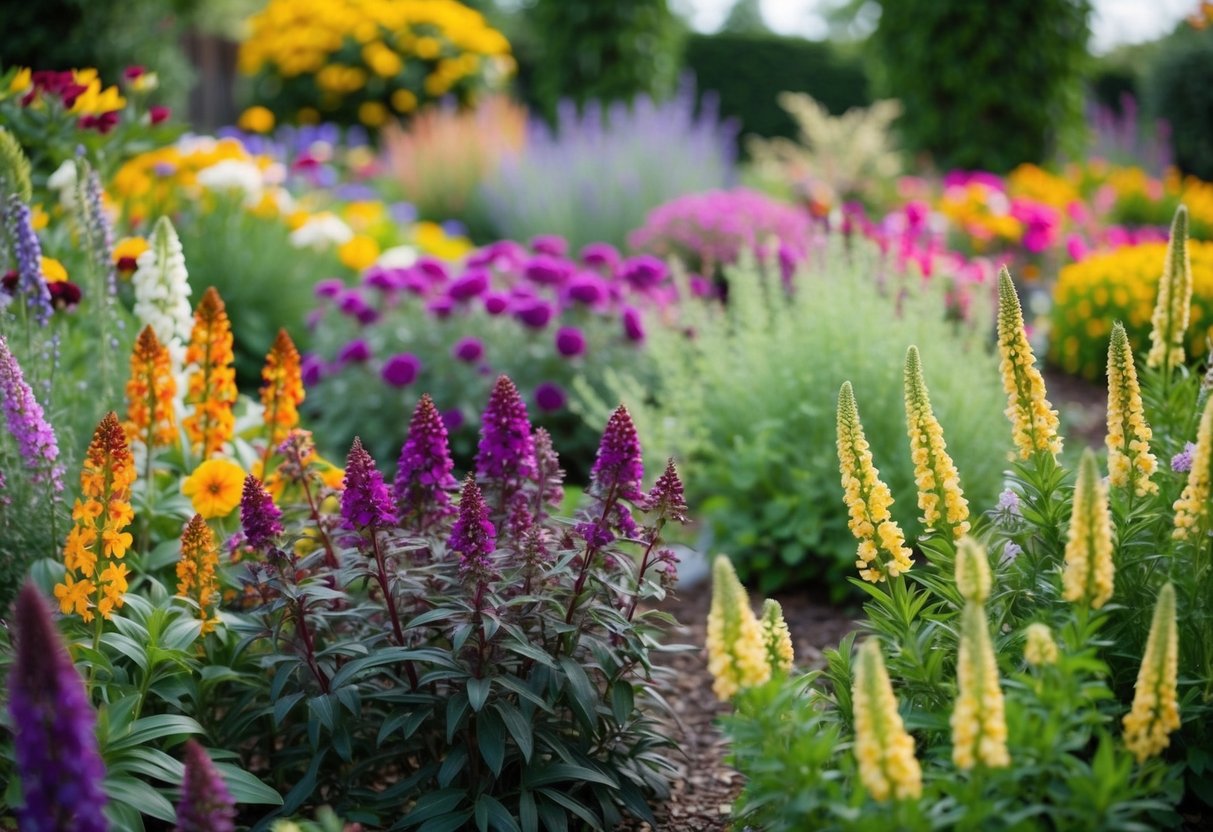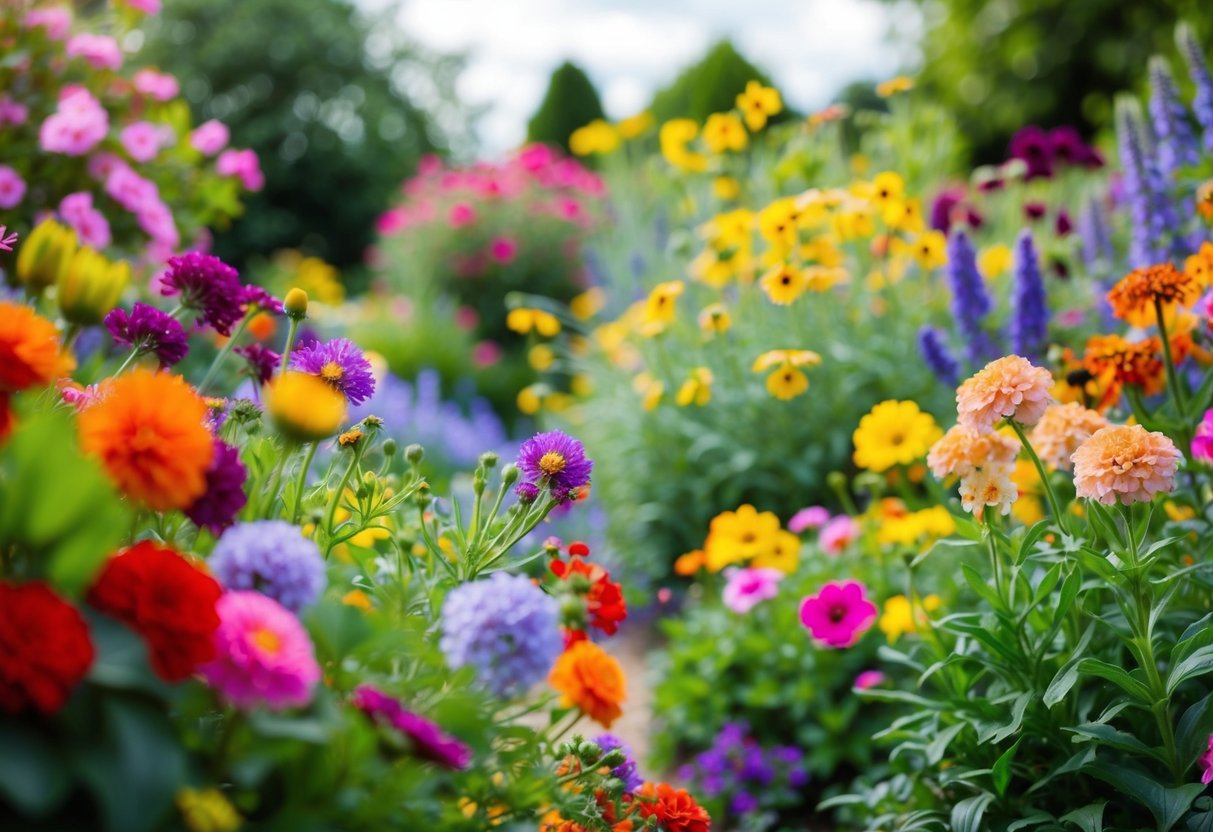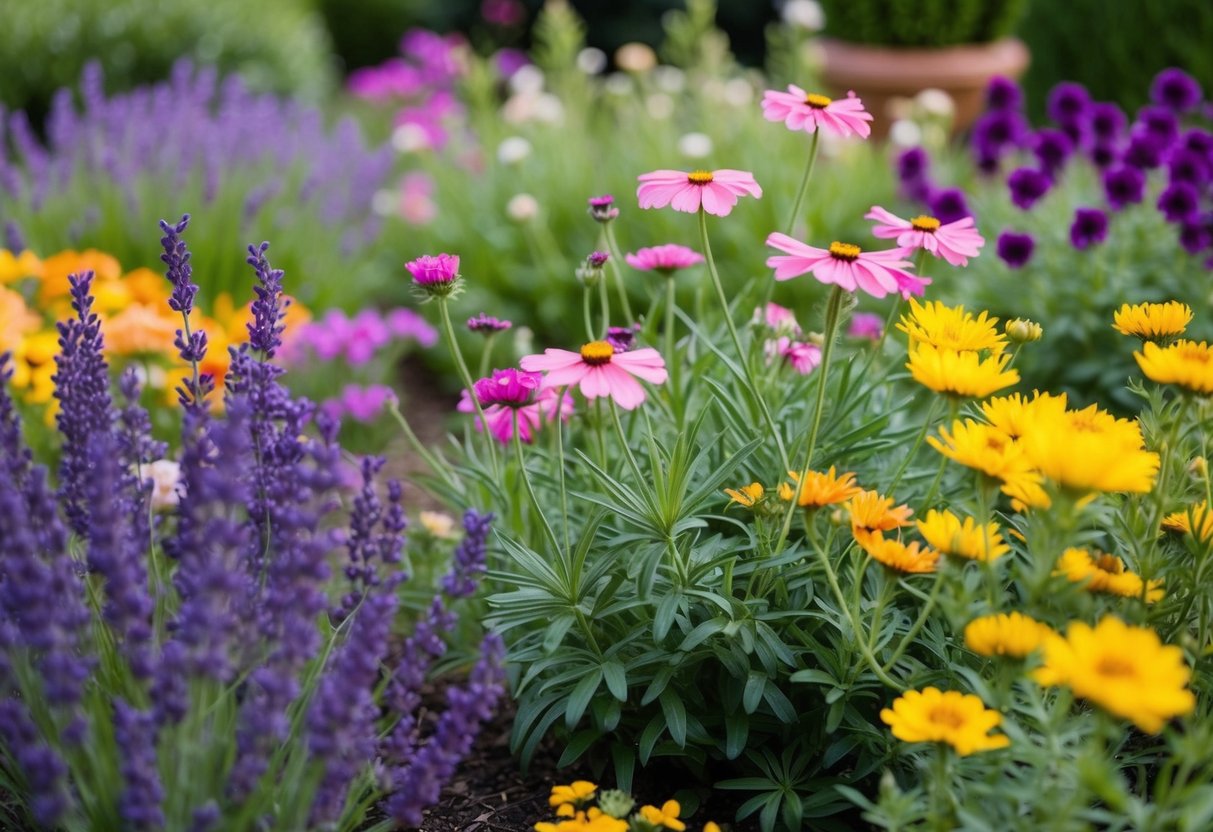What is the Longest Flowering Plant in the UK? Discover the Majestic Blooms
When planning your garden, it’s exciting to choose plants that burst with color and last for weeks or even months. In the UK, the longest flowering plants can make your garden a vibrant paradise from spring until the first frosts. One standout plant known for its lengthy flowering season is the Penstemon, which can bloom from summer right into autumn.

Imagine walking through your garden with brilliant blooms that continue to delight throughout the seasons. You can enjoy the sight of Coreopsis ‘Full Moon’, another long-lasting choice known for its warm yellow flowers. These are just a couple of examples that can help transform your garden into a year-round visual treat.
To achieve a garden filled with such enduring beauty, you might consider planting a mix of these resilient, long-flowering plants. They not only bring color but also attract pollinators, creating a lively atmosphere. For more specific plant suggestions, you can explore selections like those found at Horticulture.co.uk for a range of options.
Understanding Long-Flowering Perennials

Exploring long-flowering perennials can enhance the beauty and ecological value of your garden. These plants offer extended blooms and attract beneficial pollinators, providing a win-win for garden enthusiasts.
Defining Long-Flowering Perennials
Long-flowering perennials are plants that bloom for an extended period throughout the growing season. Unlike annuals that need to be replanted every year, perennials keep coming back, saving you time in the garden. Some popular choices include coneflowers and yarrow, which are well-known for their vibrant and lasting blooms. You can find a variety of these perennials in garden centers or even online retailers.
These plants are perfect for gardeners who want flowers nearly all year round with minimal effort. They thrive in different conditions, making them versatile companions to other plants and excellent for garden design. Mixing them with other perennials can create stunning arrangements that attract the eye.
Benefits for Pollinators
Long-flowering perennials play a vital role in supporting pollinators like butterflies and bees. By providing a continuous source of nectar, these plants encourage the presence of pollinating insects throughout the season. Various options like coneflowers are especially popular among pollinators.
By incorporating these plants into your garden, you help sustain local ecosystems. Pollinators improve the health of your garden by aiding in the reproduction of flowering plants. They also help maintain biodiversity and enhance the resilience of your garden against pests.
Choosing perennials that bloom for long periods is a simple way to create a haven for these essential creatures, ensuring your garden is both beautiful and ecologically friendly.
Ideal Growing Conditions

Creating the perfect environment for your plants ensures they bloom longer and healthier. Consider soil quality, sunlight exposure, watering habits, and temperature to promote robust flowering in your garden.
Soil and Sunlight Requirements
For the longest flowering plants, well-drained soil is a must. Clay or sandy soils often need improvement with organic matter or compost to create the best conditions. Focus on keeping the soil loose and rich in nutrients.
Full sun exposure greatly benefits most summer plants. Position them where they can receive at least 6-8 hours of sunlight daily. Doing so enhances photosynthesis and helps the plants produce vibrant, long-lasting flowers that you can enjoy throughout the season.
Watering and Drainage
Consistent watering is crucial but avoid overwatering. Many long-flowering plants are somewhat drought-tolerant, needing just enough moisture to thrive. It’s vital not to flood the soil; excess water can cause root rot.
Ensure that your garden beds have excellent drainage. Raised beds or adding sand or gravel to your soil mix can help in areas with heavy rainfall. Keeping roots healthy is essential for extended blooming.
Temperature and Climate
Most long-flowering plants thrive in warm climates. They typically prefer temperatures between 15°C to 25°C (59°F to 77°F). However, adaptations like mulching around the base of your plants can help them survive a wider range of temperatures.
Frost can be detrimental, so protect young plants during colder months. Use cloches or move potted plants indoors to shield them from the cold. Monitoring weather changes will help keep your garden flourishing year-round.
Top Longest Flowering Perennials

The UK is blessed with a variety of perennials that offer lengthy blooming periods, bringing color to gardens for months. Some favorites include yarrow, coneflower, geraniums, catmint, and coreopsis. Each brings its unique charm and characteristics, making them ideal choices for gardeners seeking long-lasting beauty.
Yarrow (Achillea)
Yarrow is a hardy perennial known for its fern-like leaves and clusters of small blooms. You’ll find it in colors ranging from white to yellow, pink, and red. Achillea thrives in well-drained soil and prefers full sun. It blooms from late spring to early fall, making it a reliable choice for extended color.
This plant is not only beautiful but also quite tough. It’s drought-resistant and can tolerate poor soil conditions. A popular choice among UK gardeners, yarrow attracts pollinators like butterflies and bees, enhancing your garden’s biodiversity.
Coneflower (Echinacea)
Coneflowers, or echinacea, are standout perennials with large, daisy-like flowers. Their central cone is especially striking, attracting bees and butterflies from summer to autumn. They come in various shades, including pink, white, and orange.
Echinacea thrives in sunny, well-drained locations. While they can handle drought, it’s good to keep the soil slightly moist for optimal growth. These plants are known for their hardiness, able to withstand the typical UK climate with ease.
Their long flowering period and vibrant blooms make them a must-have in any garden. Plus, echinacea is traditionally used for its health benefits, though you should research appropriately before use.
Geraniums
Geraniums, especially hardy geraniums, offer a lengthy flowering season in the UK. They’re easy to maintain and come in a range of colors. These low-growing perennials are perfect for ground cover, filling garden beds, or trailing from hanging baskets.
They bloom beautifully from spring to late autumn, making them a favorite for sustained garden color. Hardy geraniums thrive in various conditions but prefer sunny spots with moist, well-drained soil. Regular deadheading will help prolong the flowering season, ensuring continuous blooms.
Geraniums are great for attracting pollinators, adding life and movement to your garden.
Catmint (Nepeta)
Catmint, or nepeta, is prized for its aromatic foliage and pretty purple-blue flowers. This perennial flourishes in sunny, dry conditions and requires little maintenance once established. Blooming from late spring through summer, catmint adds a lovely touch of color to garden borders.
Ideal for cottage-style gardens, catmint can handle poor soil conditions and is drought-tolerant. Known for attracting bees and butterflies, it enhances the ecological health of your garden. Regular pruning will promote new growth and extend its flowering time.
This plant pairs well with roses and other traditional perennials, offering a soft, cascading appearance that many gardeners love.
Coreopsis
Coreopsis, or tickseed, is a vibrant perennial known for its cheerful, daisy-like flowers. Blooming from early summer into autumn, it provides long-lasting color in shades of yellow, pink, red, and more. Coreopsis is usually compact, making it suitable for borders and containers.
These plants thrive in full sun and well-drained soil. While they are drought-resistant, regular watering during dry spells helps maintain their lush appearance. Coreopsis is renowned for its ease of care and ability to attract pollinators while resisting pests.
Their bright, long-lasting blooms make coreopsis one of the most popular choices among UK gardeners.
Garden Design with Long-Blooming Perennials

Using long-blooming perennials can enhance your garden, offering vibrant colors from spring through fall. They fit beautifully within cottage gardens, rock gardens, and as companion plants in flower beds.
Creating a Cottage Garden Aesthetic
A cottage garden is known for its charming, informal look. Here, long-blooming perennials like coneflowers and coreopsis can provide ongoing color. Mix them with other flowers like hollyhocks or foxgloves for vertical interest. Using these plants, you’ll create a playful, layered effect that invites butterflies and bees into your garden space.
Try to plant in clumps to make a bigger impact. Drifts of color invite a sense of flow and movement. Incorporate paths to guide visitors and add a sense of exploration. A cottage garden aesthetic thrives on variety, so feel free to mix annuals and perennials.
Rock Gardens and Ground Cover Choices
Rock gardens can be the perfect home for certain long-blooming perennials. Plants like ice plant and sempervivum are excellent choices for rocky terrains. These plants typically require less water and can thrive in sunny spots, making them ideal for low-maintenance spaces.
To create texture and interest, pair these plants with small, ornamental rocks. For ground cover, opt for creeping thyme or stonecrop. These plants will spread across the ground, filling gaps and suppressing weeds, ensuring a neat look. Ground cover plants can add layers to your rock garden while helping to retain soil moisture.
Companion Planting for Extended Blooms
Companion planting is a great way to extend the blooming season of your garden. By combining long-bloomers with other compatible plants, you keep your garden vibrant for longer. Use techniques like the Chelsea chop to delay flowering and stagger bloom times effectively.
Consider pairing perennials with shrubs or annuals that have different blooming cycles. This will ensure that when one plant finishes flowering, another begins, keeping your garden always fresh. Companion plants can also help deter pests and enrich soil, promoting a healthier garden environment while maximizing blooming potential. Utilize these strategies to make your flower beds a colorful, dynamic, and ever-changing display.
Care and Maintenance for Longevity

To ensure your flowering plants thrive year-round, focus on proper care techniques. Pruning and deadheading are key for stimulating growth. Fertilization enriches the soil, supporting plant vitality. Managing pests and diseases prevents damage, ensuring your plants remain healthy and vibrant.
Pruning and Deadheading
Regular pruning and deadheading are essential for keeping your plants blooming longer. Deadheading involves removing spent flowers to prevent the plant from diverting energy to seed production. This keeps your plants like valerian and moonshine looking fresh and encourages more blooms.
Try the Chelsea chop on perennials like asters to stagger flowering times and prolong blooms. Shearing the plants back by a third to a half can also stimulate new growth. For plants that are done flowering, trim them back to prevent diseases from spreading on dead material. Always use clean, sharp tools to avoid damaging the plant.
Fertilization and Soil Enrichment
Providing the right nutrients is crucial for the longevity of flowering plants. Use a balanced fertilizer rich in nitrogen, phosphorus, and potassium. Applying this in early spring can boost the growth of perennials like asters and moonshine.
Advanced soil enrichment techniques include composting to add organic matter, which improves soil structure and nutrient availability. A well-drained soil mix reduces stress on the plants and ensures better water retention. Regularly testing your soil helps you know which nutrients are lacking so you can adjust accordingly.
Disease and Pest Management
Pest and disease control is vital to maintain plant health. Look for common culprits like aphids and slugs, which can quickly infest gardens. Introduce natural predators like ladybugs or use neem oil as a natural deterrent.
Consistent monitoring helps catch issues early on. Diseases like powdery mildew can be managed with adequate spacing and air circulation. Keeping your plants clean and dry can minimize fungal infections. Regularly inspect your plants to remove any affected leaves or stems, reducing the chance of spreading.







